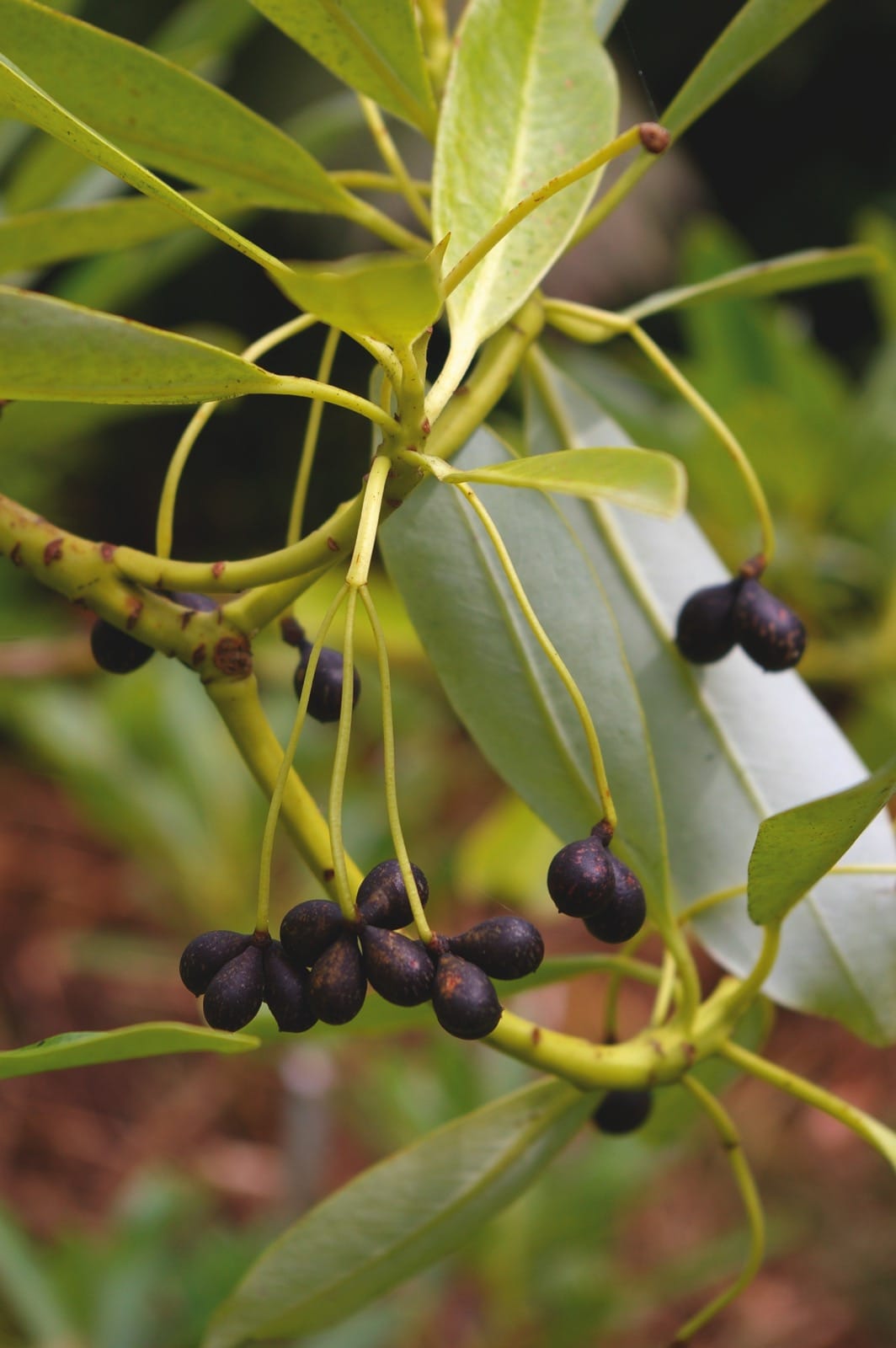Drimys granadensis
Credits
Article from New Trees by John Grimshaw & Ross Bayton
Recommended citation
'Drimys granadensis' from the website Trees and Shrubs Online (treesandshrubsonline.
Genus
Shrub or tree to 13 m. Branchlets pale grey or brown, glaucous when young. Leaves thick and leathery, 5–16 × 1–5.5 cm, elliptic to oblong, upper surface olive-green to brown when dried, lower surface pale or glaucous, 8–19 secondary veins on each side of the midrib, margins entire and revolute, apex obtuse; petiole flattened or channelled, often winged, 0.4–2.5 cm long. Inflorescences terminal or axillary, umbellate, clustered or single-flowered; peduncle 0.7–9 cm long, slightly flattened. Flowers one to six (to eight) per inflorescence, pedicels 0.5–9 cm long; sepals papery or membranous, opaque, 0.4–1.2 cm long; petals 8–17(–25), membranous, oblong to elliptic, yellow-glandular, 0.5–2.5 cm long; stamens 25–50(–65). Berry dark purple or reddish black. Smith 1943. Distribution COLOMBIA; COSTA RICA; GUATEMALA; MEXICO: Guerrero, Veracruz; NICARAGUA; PANAMA; PERU; VENEZUELA. Habitat Temperate forest at high altitudes. USDA Hardiness Zone 9–10. Conservation status Not evaluated. Illustration NT315. Taxonomic note Smith (1943) recognised five varieties of D. granadensis: var. granadensis from Colombia, including the type of the species (Hieron rather unaccountably called this nominate variant var. grandiflora); var. uniflora (Turcz.) A.C. Sm. from Venezuela; var. mexicana (DC.) A.C. Sm. ranging from Mexico to Costa Rica; var. chiriquiensis A.C. Sm. from Panama; and var. peruviana A.C. Sm. from Peru. The Mexican variety, which has also been brought into cultivation, is only slightly different from typical D. granadensis (more slender habit, leaves thinner in texture, petals more numerous and slightly smaller).
Taken in a broad sense, Drimys granadensis is a tropical plant, with some populations extending into cooler areas. It would therefore seem to be at the limit of its tolerance in the mildest parts of our area, and this is reflected in its rarity in collections. It is in cultivation and commercially available in the United Kingdom, principally from a gathering made near Xalapa by James Russell, but does not seem to feature in any of the major collections except Tregrehan, where it is making a rather untidy shrubby plant (T. Hudson, pers. comm. 2007). Specimens originating from a 1982 gathering by B. Anderson in Costa Rica – and therefore probably var. mexicana – are growing at the University of California Botanical Garden at Berkeley, and this and another unspecified variant are in cultivation at the San Francisco Botanical Garden, but the species does not seem to be commercially available in the United States. More recently, a 2004 introduction by Bleddyn and Sue Wynn-Jones (BSWJ 10777) from 3300 m in the paramo of La Caleva, south of Bogotá, Colombia has been offered under the name var. grandiflora Hieron, a synonym of var. granadensis. The interest in this tree derives from its handsome leaves, which are brightly white-glaucous below, and the clusters of large, pure white flowers. It should be given a warm, sheltered but not shady site, preferably in rich moist soil.

